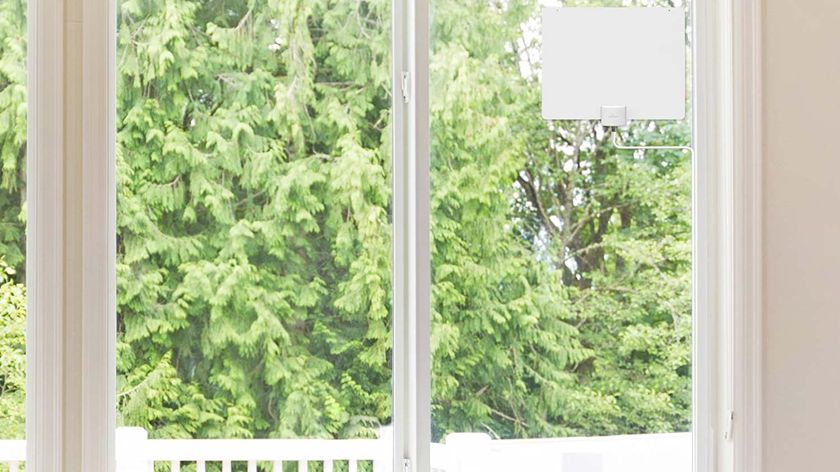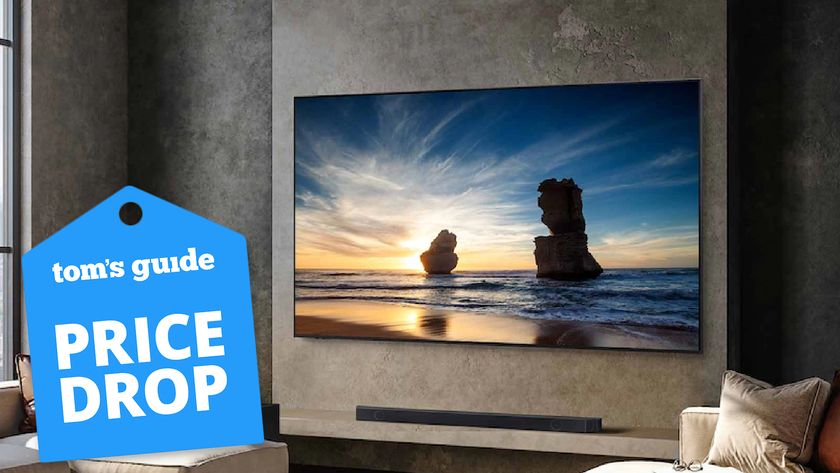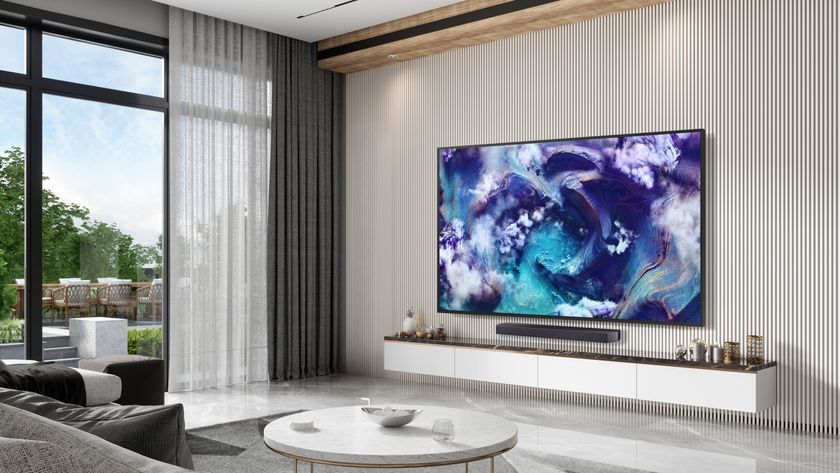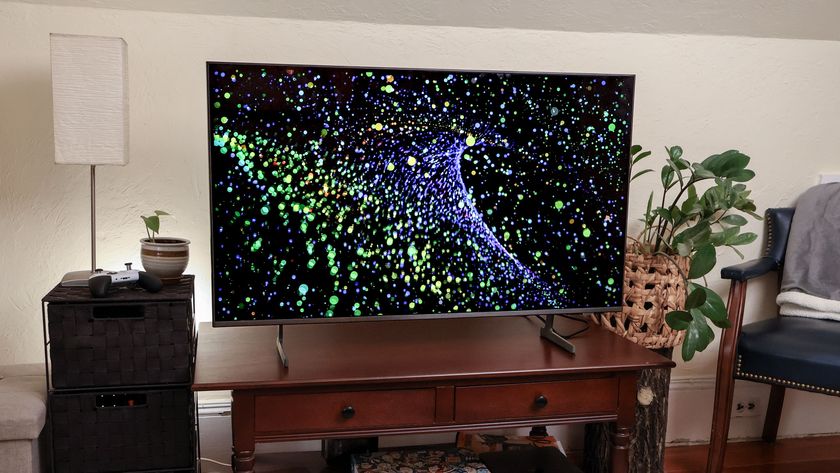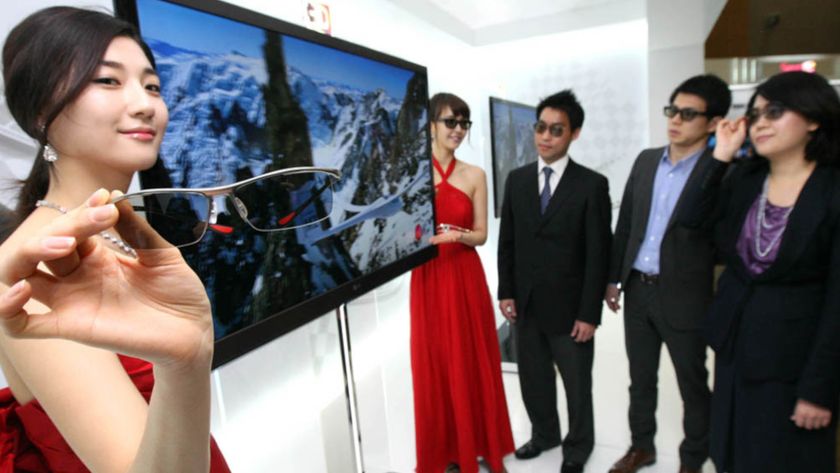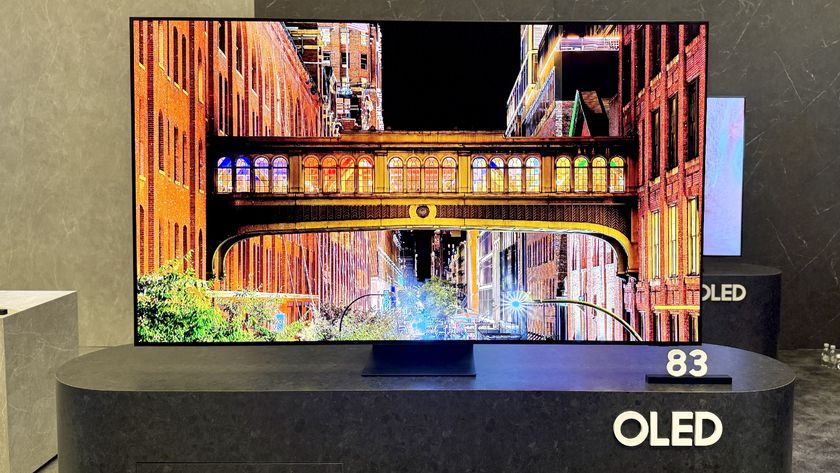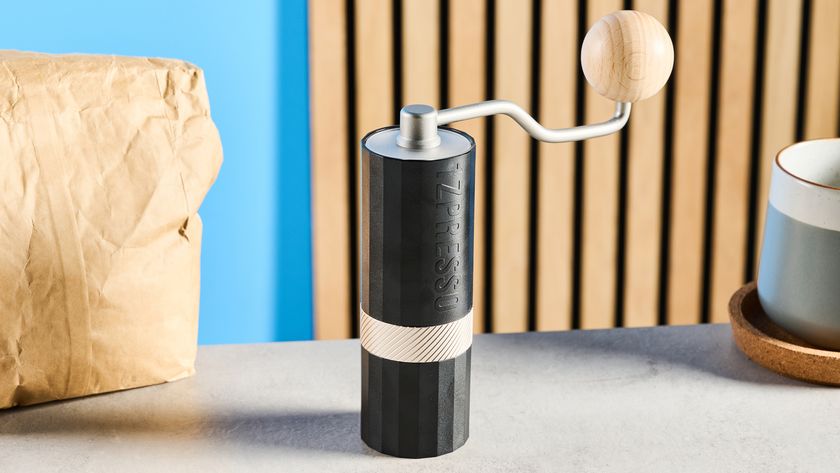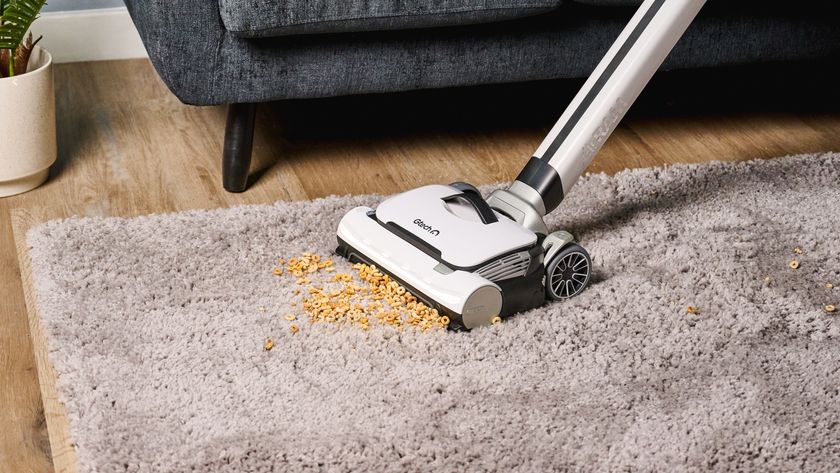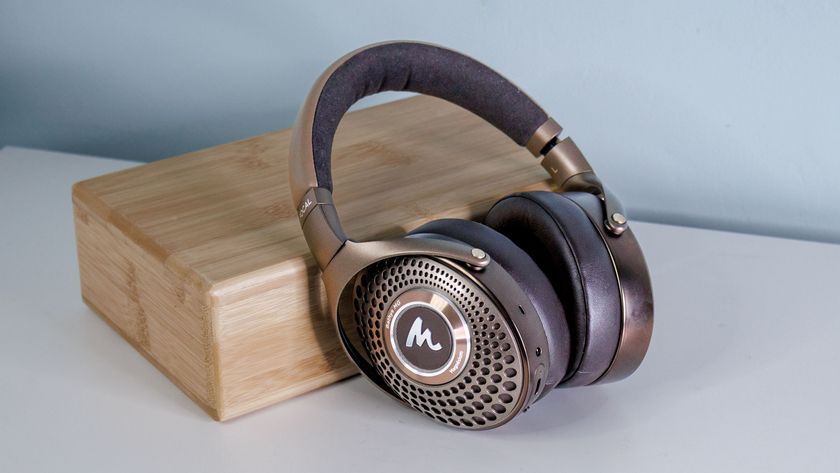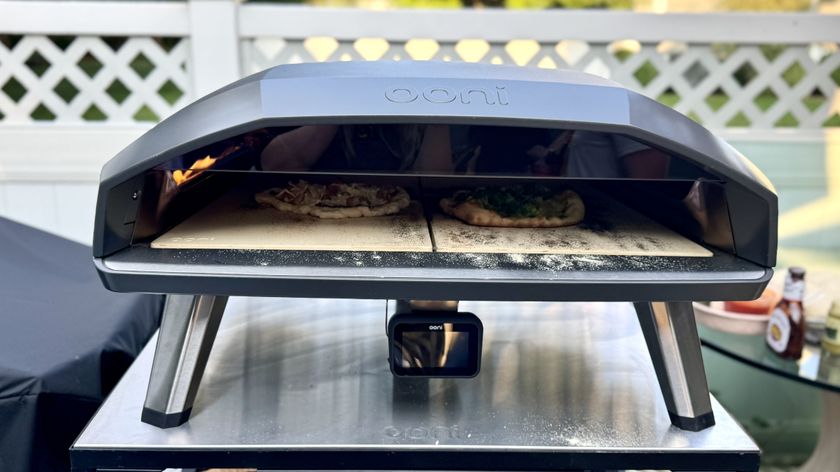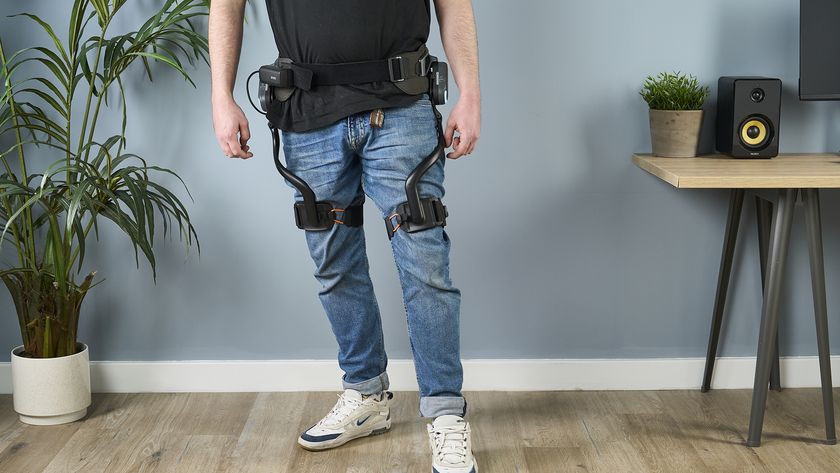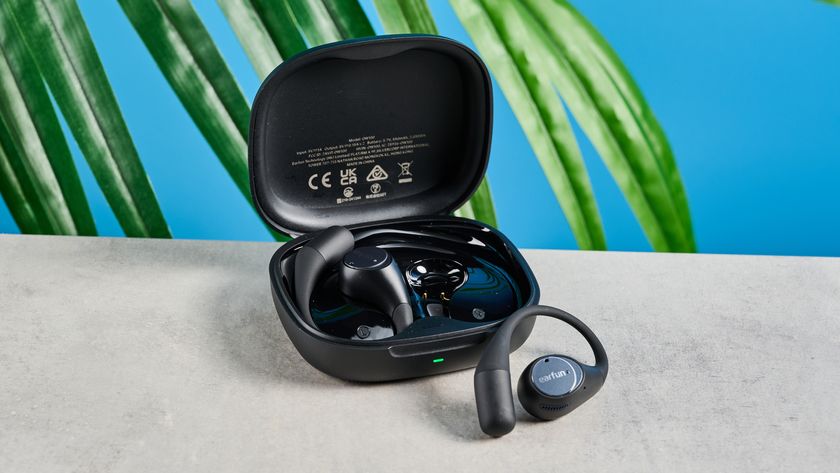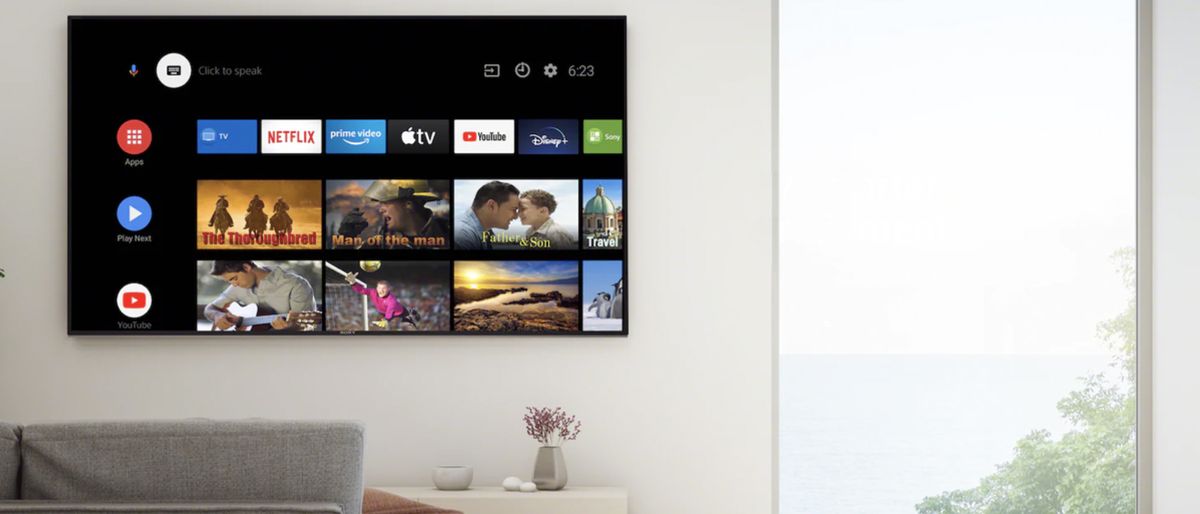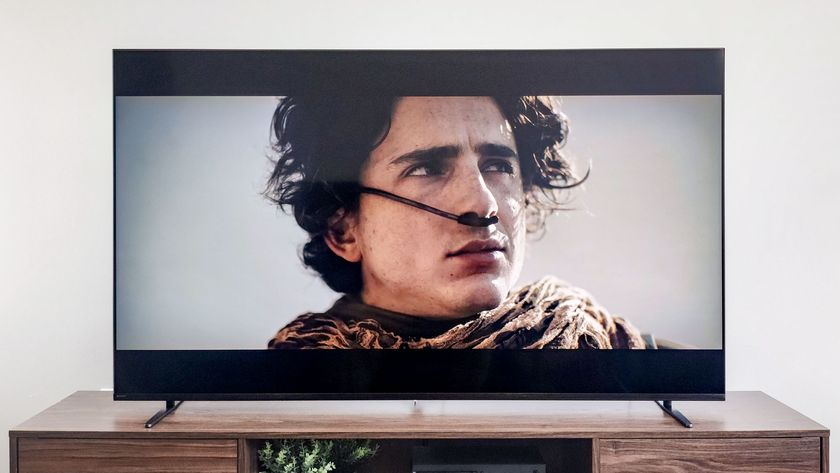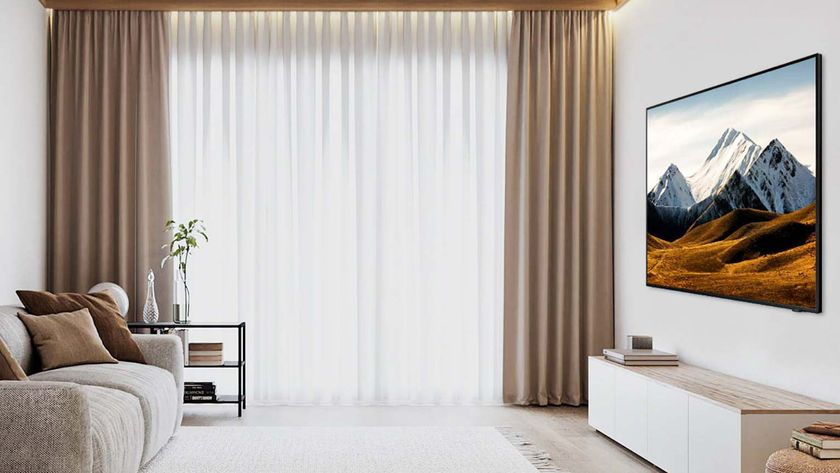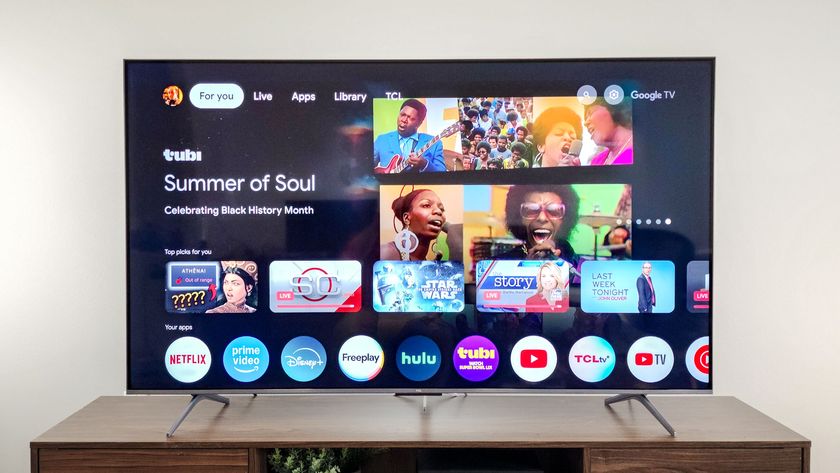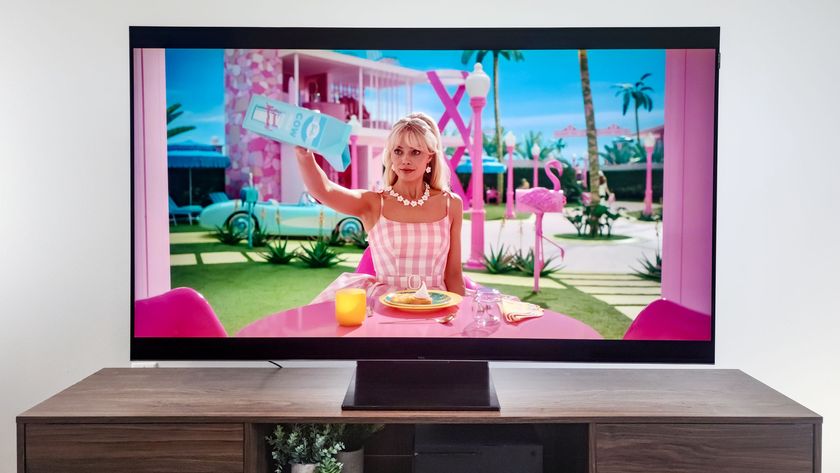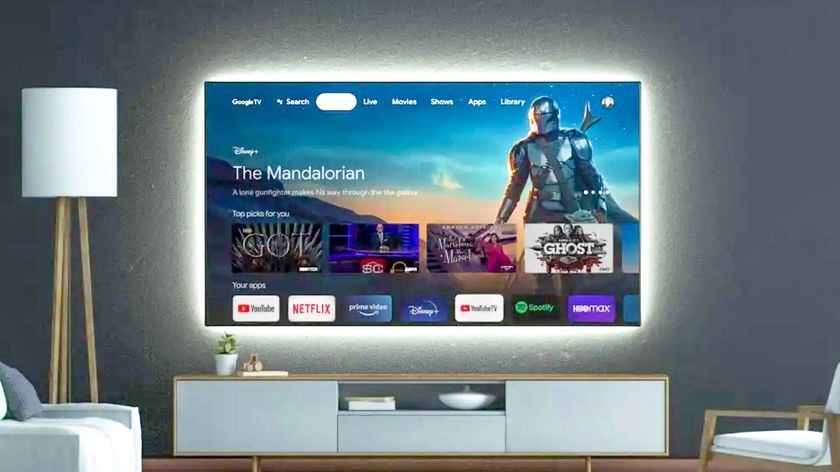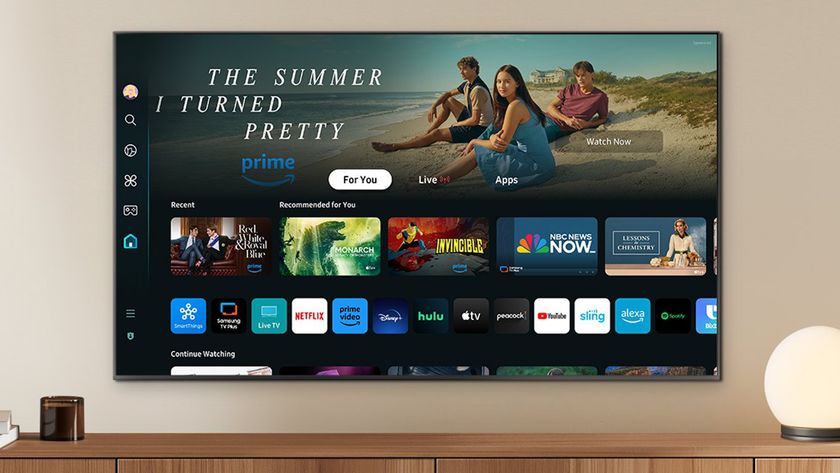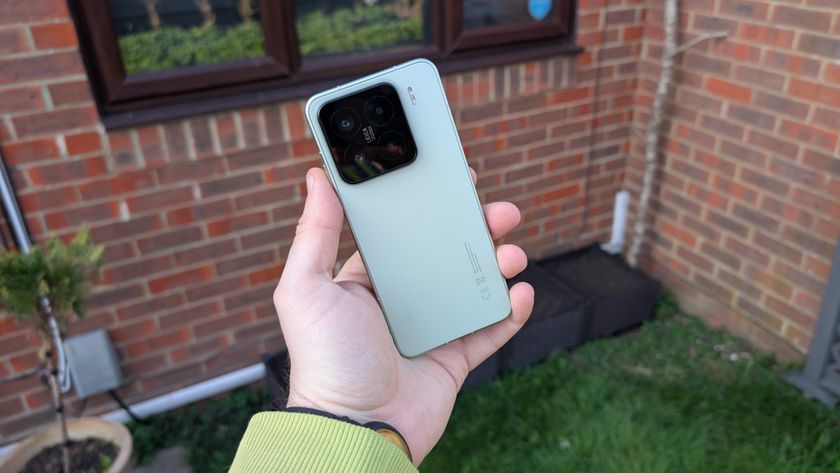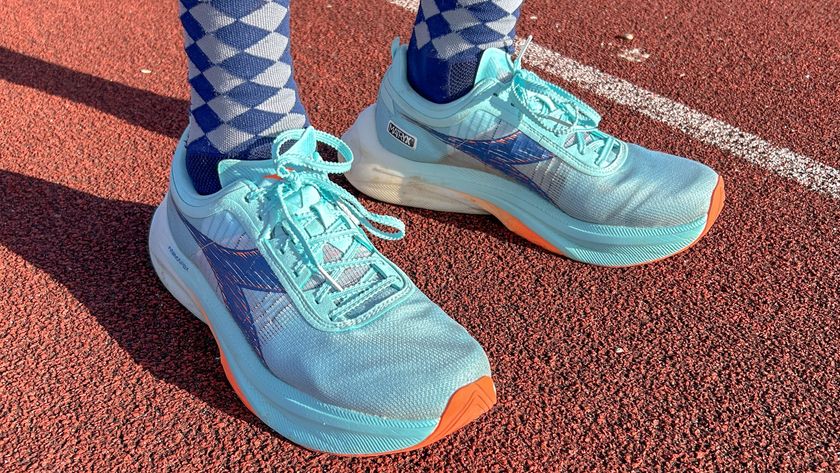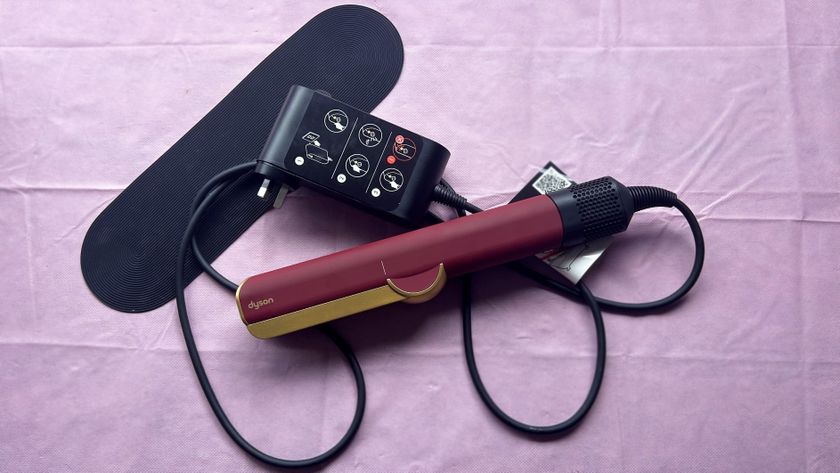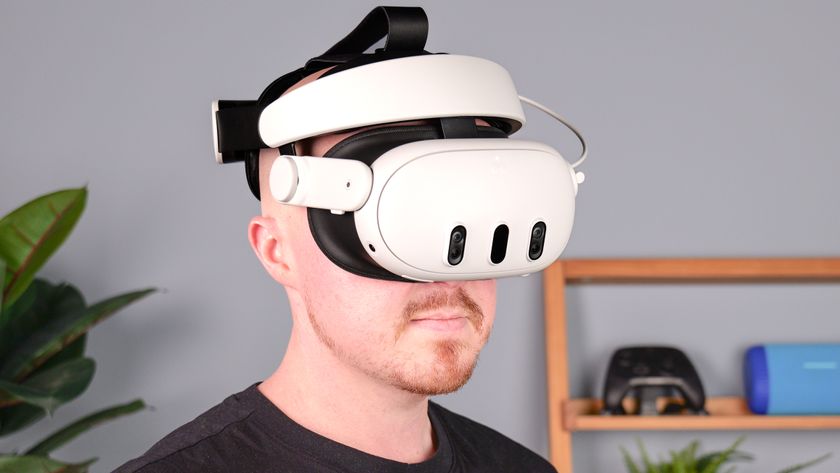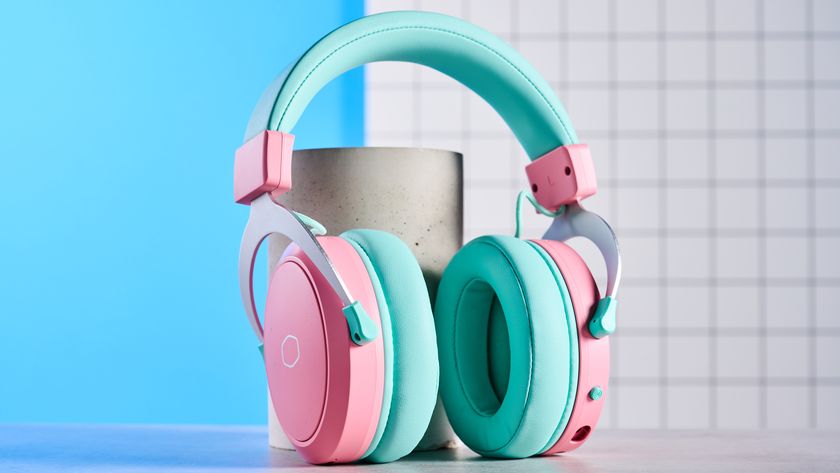Tom's Guide Verdict
The bright and sharp picture of the Sony Bravia X800H, along with its robust Android TV smart OS, make it one of the best midsized TVs — if you don’t mind the price.
Pros
- +
Bright and sharp picture
- +
Wide viewing angles
- +
Dolby Vision and Dolby Atmos
Cons
- -
Clunky remote
- -
Average color accuracy
Why you can trust Tom's Guide
Price: $598
Screen size: 43 inches
Resolution: 3840 x 2160
HDR: Dolby Vision, HDR10, HLG
Refresh rate: 60Hz
Ports: 4 HDMI (1 ARC)
Audio: 2 Channel [x 10 watt, with Dolby Atmos]
Smart TV software: Android TV version 4.9.125
Size: 38.25 x 22.5 x 2.25 inches [w/o stand]
Weight: 20.7 pounds [w/o stand]
If you’re looking for a quality TV picture but don’t have a lot of room, the Sony Bravia X800H could be the right fit — if you have the budget. The Bravia X800H we tested (model XBR-43X800H) has a 43-inch screen that would be at home in a bedroom or a small living room. It’s very bright for a midsize TV, and delivers a crisp, detailed image. It runs Android TV, a full-featured smart OS, and comes with support for Dolby Vision and Dolby Atmos.
This 2020 model can be found at surprisingly affordable prices, so long as you're prepared to sacrifice a few of the finer features that are more common on 2021's best TVs. For example, the Bravia X800H lacks HDMI 2.1 support, which you may want if you have an Xbox Series X or Playstation 5, and its colors look a little off, especially during game play. The XBR-43X800H also costs about $600, or almost twice what a TCL 4 Series or Toshiba C350 Series in the same size goes for. But if you don’t mind the price and you like the control that Android TV offers, the Sony Bravia X800H is a solid set.
Sony Bravia X800H review: Price and availability
The Sony Bravia X800H series was released in 2020 (Sony released a newer version in 2021, the X80J). We tested the XBR-43X800H, which is the 43-inch model. It’s available at Best Buy for $599.99 and Walmart for $598, as well as other online retailers.
The X800H comes in several sizes to fit your space, from the 43-inch model we tested all the way up to 85 inches:
- 43 inches (model XBR-43X800H) - $598.00
- 49 inches (model XBR-49X800H) - $649.99
- 55 inches (model XBR-55X800H) - Discontinued
- 65 inches (model XBR-65X800H) - $999.99
- 75 inches (model XBR-75X800H) - $1,234.99
- 85 inches (model XBR-85X800H) - $1,799.99
The 55-inch appears to be out of stock through most retailers, and is discontinued. But the biggest difference between our 43-inch review unit and the larger models is the addition of more speakers in the larger 65, 75 and 85-inch sets; other than that we expect the performance to be similar across the line.
Sony Bravia X800H review: Design
The XBR-43X800H won’t attract much attention when it’s not on — which isn’t a bad thing when you’re putting it in a bedroom. The 38.25 x 22.5 x 2.25-inch set is black plastic all the way around and features a half-inch bezel.
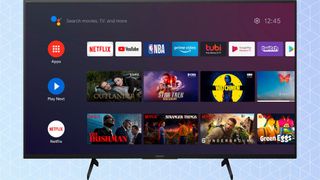
Its most distinguishing feature is its feet: they are slimmer than most, but still provide a solid base. If you prefer to hang the TV, it accommodates a 100 x 200 mm VESA mount, and should work with the majority of the best TV mounts.
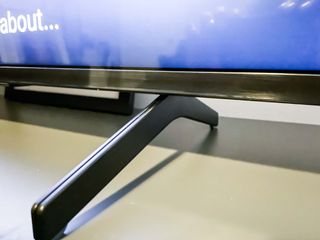
Sony Bravia X800H review: Ports
The Bravia X800H has four HDMI ports — plenty to connect your cable box, game system and a couple of other external devices; however none of them support HDMI 2.1 needed for taking advantage of the latest gaming technology. The TV has three HDMI ports on the left side, which allows easy access, and one on the back. One of the side ports handles audio-return channel (ARC) for a single connection to a soundbar.
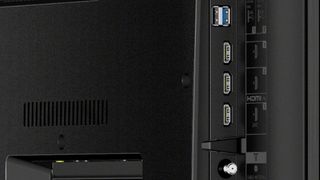
In addition, there’s a composite video input, an RF input and two USB ports. For sound, in addition to HDMI ARC, you can use an optical digital audio cable or the headphone jack. For wireless connections, the Bravia X800H includes Chromecast and Apple AirPlay, as well as Bluetooth for audio. You can access your network through Wi-Fi or a wired Ethernet port.
Sony Bravia X800H review: Performance
For a smaller TV, the XBR-43X800H has a good overall picture. While it can’t beat large TVs with more features, it definitely looks better than many 43-inch TVs. It has a bright and consistent image across the screen, with wide viewing angles. Thanks to its brightness, it also handles HDR better than many TVs at this size.
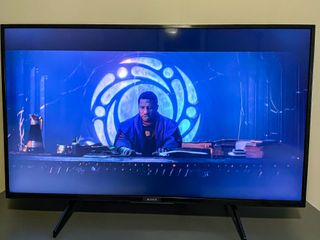
While watching the attack on Wakanda in Avengers: Infinity War in Dolby Vision, the images had depth and good contrast. When Loki and Sylvie encounter He Who Remains, the walls behind He Who Remains showed good contrast and light elements in the dark were more apparent. When Simon Biles flipped and twirled on the floor routine at the Tokyo Olympics, her movements were crisp no matter how fast she went and the colors remained fairly consistent even when viewing from the side of the screen. The sequins on the USA women’s gymnastics uniforms also twinkled sharply.
When I connected an Xbox Series X, the Bravia X800H didn’t switch automatically to game mode. And despite the unit’s Dolby Vision and HDR10 support, neither engaged automatically with the Xbox. While playing Forza Horizon 4 and Apex Legends, the action with smooth and detailed, but the color wasn’t right — something that our lab testing showed is a flaw with the TV.
Sony Bravia X800H review: Test results
Our lab test results supported our eye test when it came to brightness. The Bravia X800H produced 426 nits in our test, well above the 292 that the well-regarded TCL 4-Series Roku TV managed and the highest among midsized TVs we’ve tested. That helped it display HDR content better than most small TVs.
It also did very well in standard Rec 709 color spectrum test, reproducing 99.75% of the color gamut — again the best among midsized TVs we’ve reviewed. However, it faltered when it came to color accuracy, scoring a Delta-E of just 3.6 (lower scores are better). That’s not the worst color accuracy we’ve seen — that dubious honor goes to the Insignia Fire TV Edition NS-32DF310NA19 and its 7.5 — and puts it in the middle of the pack in similar TVs. The Toshiba C350 Fire TV crushed the competition with a 1.7.
The Bravia X800H produced impressively low lag times at 11.2 milliseconds, which helped it handle fast action without blurring. That puts it among the lowest in midsized TVs, outpaced by only the Toshiba C350 (10.7ms) and LG 43UN7300PUF (11ms).
Sony Bravia X800H review: Audio
We don’t expect much from the speakers in a TV these days, especially a midsized one like the XBR-43X800H. On the other hand, Sony is known for delivering some of the best sound in TVs these days. The Bravia X800H sounds better than you’d expect but not as good as you’d want. The two-channel, 10-watt speakers made it easy to understand Loki and Sylvie debating with He Who Remains, thanks in part to the presence of some bass — something most TVs can’t say. While watching Hamilton, the bass helped drive the beat, but — while it supports Dolby Atmos and has virtual surround sound — the XBR-43X800H has a fairly narrow overall soundfield.
It doesn’t have any sound modes you can engage to easily adjust the audio, but you can adjust very detailed audio settings through Android TV, including the dialog level and surround sound level. There’s even a five-band equalizer if you want to tweak the sound, but the effects are minimal due to the size and quality of the speakers.
Sony Bravia X800H review: Smart features
This 2020 model runs Android TV — a robust smart TV OS — while the 2021 version includes Google TV, which features a slightly fancier design. But the core features aren’t that different.
To get started, select your network to connect the TV to the Internet. The TV will then walk you through a series of steps, such as telling it if you have cable or use an antenna and what devices you have connected to the HDMI ports. Soon enough you’ll find yourself ready to start watching.
The top menu is concise: Search, Home, Discover and Apps. The Home screen features a long, scrolling page with suggested shows and movies, Favorite Apps (which you can edit), Play Next (shows in progress or the next episode in a series) and recommendations from apps you’ve installed. Since it’s an Android device, you have a lot of control over what appears — go to Settings > Device Preferences > Home Screen to adjust what you see.
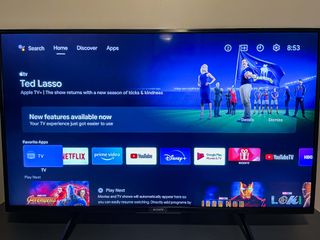
Discover offers personalized recommendations for what to watch, and Apps shows your installed apps and offers access to the Google Play Store to download more. You’ll find just about any app you want in the Google Play Store.
Android TV includes Google Assistant, a powerful way to quickly access features of the TV and more. You activate Google Assistant by pushing a button on the remote. The virtual assistant was responsive and quick to act on commands. I was able to launch Netflix, change the volume and turn off the TV with my voice, in addition to getting the weather and controlling some smart plugs in my house.
Sony Bravia X800H review: Remote control
The remote that comes with the Bravia X800H is so long that, unless you have hands the size of a professional basketball player, it’s unlikely that you can hold it in the middle and manage to access the buttons at the top or bottom with one hand. It has a rough plastic back that makes it uncomfortable to hold, but at least it won’t slip out of your hand.
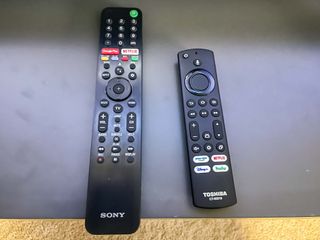
But the size means it has space for buttons for just about everything. In the middle, it has the most useful features: a scroll wheel for navigating, a button for activating Google Assistant and a back button. About one-third of the way down it has two quick access buttons: one for Google Play Store and the other for Netflix. With all the space it has, it seemed like there should be more quick access buttons. But it used that space for buttons that aren’t very common, such as a full number pad, four colored buttons that offer contextual features — but only at times — and a Jump button that switches between channels, but only if you’re using the TV. In these days of “less is more” remotes, the Sony remote is a throwback — and not in a useful way.
Sony Bravia X800H review: Verdict
For a midsized TV, the Sony Bravia X800H impresses. It produced a bright picture with decent contrast, and it runs Android TV quickly. It has a low lag time and sharp overall image, though its color accuracy is just average. The main drawback is its price: at almost $600, it's about twice as expensive as most 43-inch LCD TVs.
If picture quality isn’t your highest priority and you like Amazon Alexa, the Toshiba C350 Fire TV costs less than $300, and it reproduces color better than the Sony Bravia X800H, though it’s not as bright or sharp. For Roku TV fans, the TCL 4-Series Roku TV (43S435) is one of our favorite overall sets at this size. But if you want the robust features and control that Android TV offers, the Sony Bravia X800H could be worth the premium.

Michael Gowan is a freelance technology journalist covering soundbars, TVs, and wireless speakers of all kinds of shapes and sizes for Tom’s Guide. He has written hundreds of product reviews, focusing on sound quality and value to help shoppers make informed buying decisions. Micheal has written about music and consumer technology for more than 25 years. His work has appeared in publications including CNN, Wired, Men’s Journal, PC World and Macworld. When Michael’s not reviewing speakers, he’s probably listening to one anyway.
